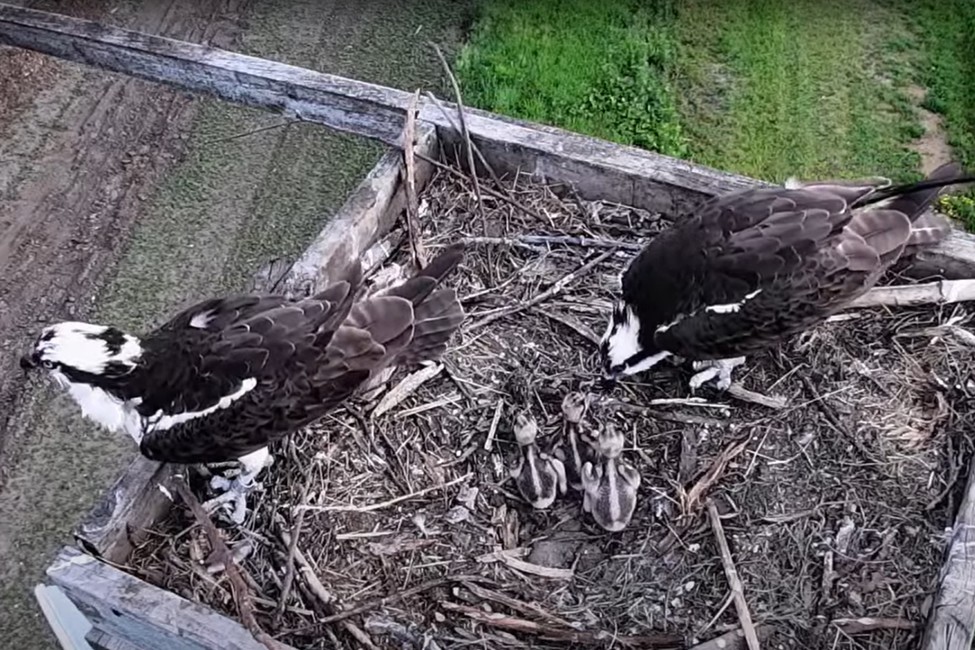The Arboretum is delighted to report that all three chicks have hatched under the Arboretum's live Osprey Cam and they are eating regularly.
While the adults are fascinating creatures, seeing them with three youngsters is a true delight.
To better understand the behaviors of the chick and parents, we reached out to Lori Arent, the Assistant Director of The Raptor Center at the College of Veterinary Medicine at the University of Minnesota. Here’s what she had to say!
Q: What is going on right now in the nest?
It may look like the female is still incubating while sitting on the live chicks, but what she is actually doing is called brooding — keeping her chicks warm as needed until they can better regulate their own body temperatures. She does this for about the first 10 days after the chicks hatch. However, she is not laying on them as firmly as she lays on the eggs and she does not need to reposition/turn them as she does her eggs. In fact, they adjust themselves underneath her and you can see when they move based on her behavior.
Q: Who is doing the feeding and fishing?
During the brooding phase, the male will do most of the hunting. When the male delivers the fish, you will notice that the female eats a few pieces herself. She is eating the parts of the fish that are harder to digest and feeds her chicks the softer parts as their digestive systems are not yet capable of digesting tough skin, scales or larger bones.
Q: Do the chicks go to the bathroom in the nest?
Yes, but in a specific way. When the female gets ready to feed the chicks pieces of fish, you may notice that one or all of the chicks may clear their cloacas (go to the bathroom) to make room for their next meal! It happens fast, but when they eliminate their waste, they do it in projectile fashion to help keep their immediate surroundings clean. Diurnal raptors eliminate their waste in this way and it is sometimes referred to as slicing. Owls do not do this; they eliminate their waste straight down.
Q: How much do the chick need to eat to survive?
Because the chicks are small, it does not take much food to fill their stomachs. Because of this, they need to be fed several times a day. As they grow and their stomach capacity increases, they will eat larger meals fewer times each day until they only need one large meal per day as they get close to fledging age.
Thank you to all Arboretum visitors and beyond who are following along on the Osprey Cam, which shows one of three nests on Arboretum property.
Note: Because this is a live video of wild animals in nature, natural struggles will occur, including inclement weather and other wild bird behaviors that may be difficult to watch. Please use discretion when watching this cam, which operates 24 hours a day with sound.
If you’ve fallen in love with osprey and are hungry for more, check out the PBS Nature show, Season of the Osprey, available for rent on Amazon Prime Video. Narrated by Paul Giamatti, it shows incredible footage of osprey flying, fishing, fighting off eagles and in their nests raising chicks on the mouth of the Connecticut River, which contains one of the highest concentrations of breeding osprey along the southern New England coast.
